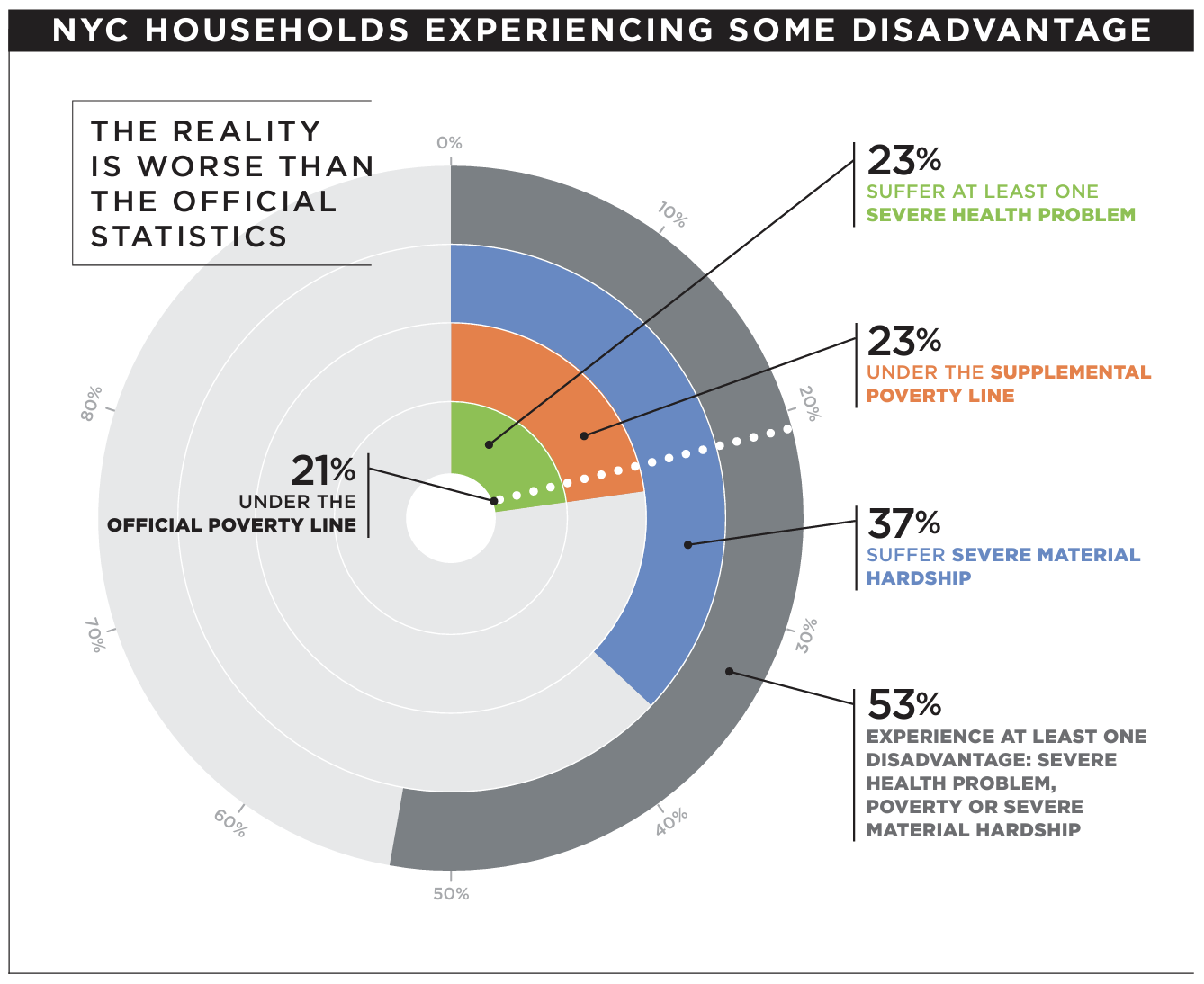April 2014
Poverty Tracker: Income, Hardship, & Health in NYC
Inaugural issue of Robin Hood’s Poverty Tracker explores the reality of poverty in NYC
Contributors: Christopher Wimer,Irwin Garfinkel, Madeleine Gelblum, Narayani Lasala, Stephanie Phillips, Yajuan Si, Julien Teitler, and Jane Waldfogel
Issues Areas: Health & Well-Being
The official poverty estimate for New York City, at about 21%, is well-known. It’s also wrong.
Data from this inaugural issue of Robin Hood’s Poverty Tracker explores the reality of poverty in NYC, finding that 23% of New Yorkers were in poverty in 2012, meaning they lacked money to cover their basic food, medical and housing needs; 37% were affected by severe material hardship; and 23% were in poor health. Our survey suggests that more than half of New York City residents struggled across one of these dimensions at some point during 2012.

Experts have long pointed out that deep-seated flaws in the way the federal government calculates poverty distort our picture of life at the bottom of the economy. So Columbia University’s Population Research Center and Robin Hood have partnered to create a first-of-its-kind survey. It will be conducted by Columbia University with the same households four times each year over two years. After two years, a new panel of households will be recruited and quarterly surveys will start anew.
The goal is to capture rich details on household expenditures, income and government supports. And — unique to this survey — it will serve to gather information about material hardships and family and child well-being that existing surveys simply overlook. Another novel feature of this survey is that it captures the dynamics of poverty: how low-income residents respond to difficult circumstances over time. With more accurate information in hand, public and private funders will be better equipped to combat poverty.
The power of the survey will be fully realized after a year or two, but important findings have already emerged from the first survey. For example, more than half of New Yorkers suffer from one of the following: poverty, severe material hardship or a severe health issue. These numbers are far bleaker than official statistics; they represent more individuals and families than previously calculated who struggle on a regular basis.